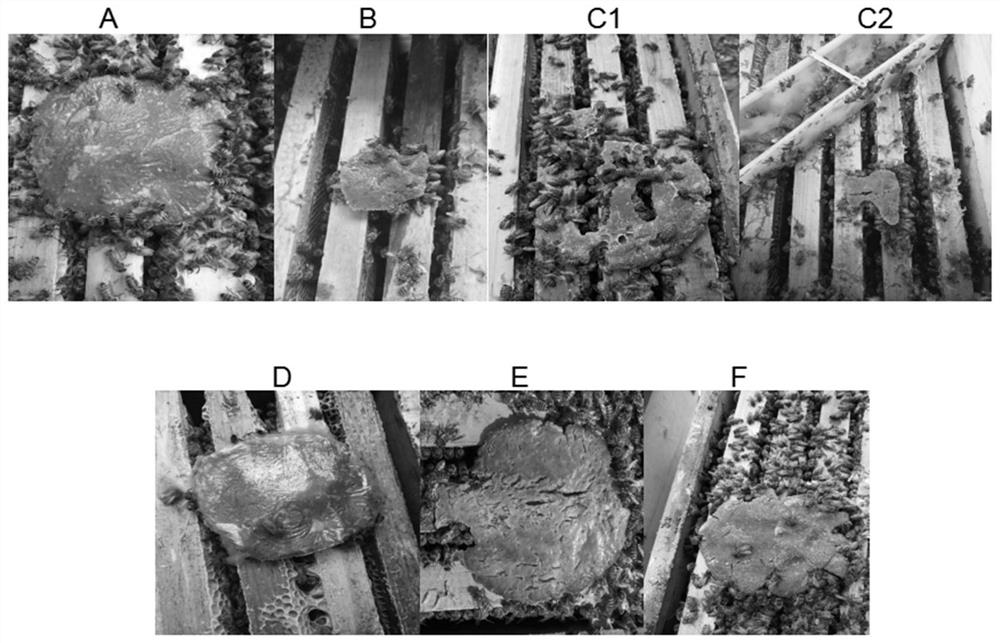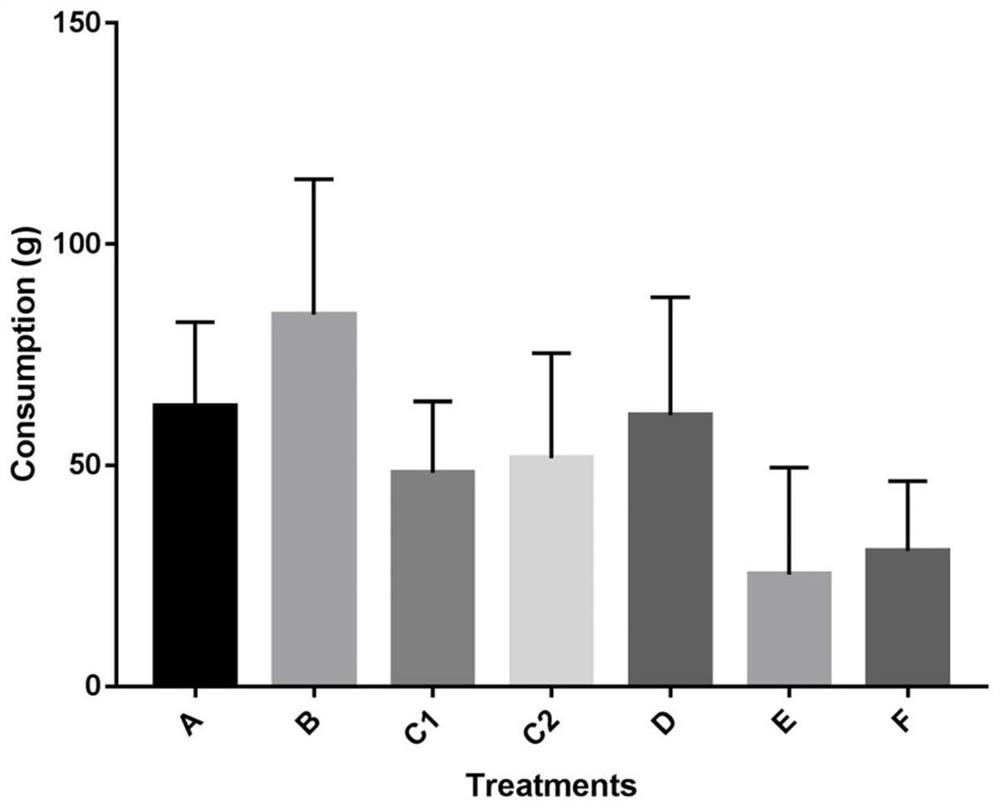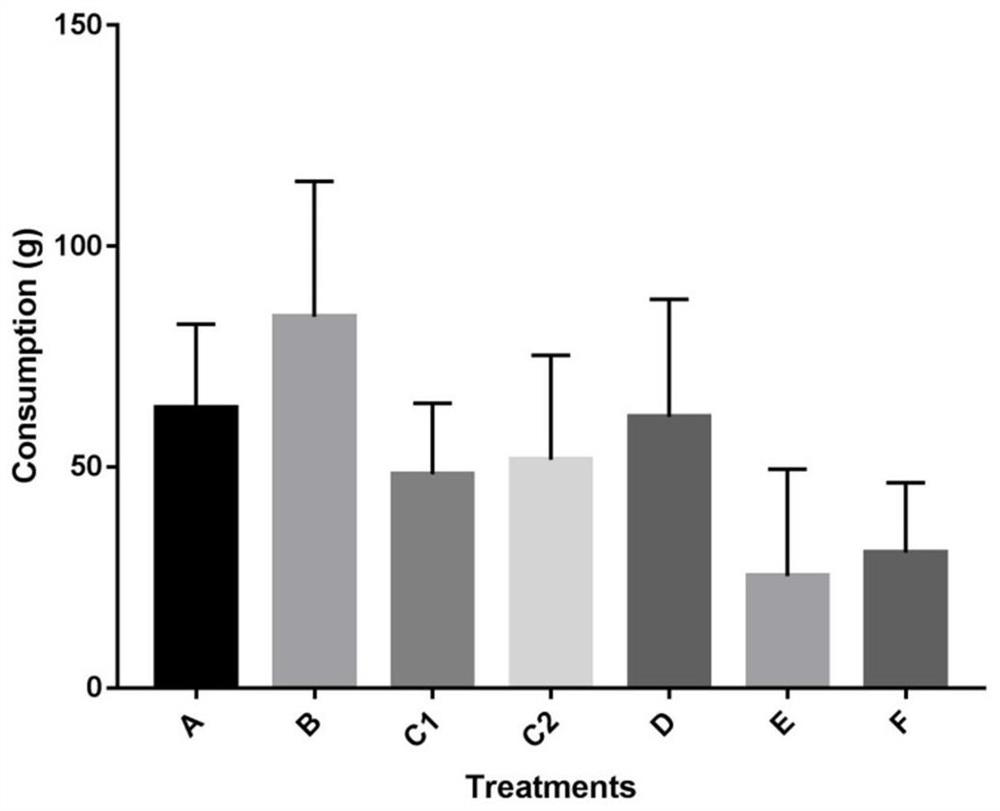Bee feed, preparation method and application thereof
A honeybee and feed technology, applied in the field of bee breeding, can solve the problems of not paying attention to the impact of bee feed, bee life, food intake, and bee vitality, so as to facilitate food intake and nutrition, improve bee life, and promote larvae breeding Effect
- Summary
- Abstract
- Description
- Claims
- Application Information
AI Technical Summary
Problems solved by technology
Method used
Image
Examples
Embodiment 1
[0034] Example 1 Preliminary Screening and Effect Research of Feed Formula Materials
[0035] 1. This embodiment is based on the feed research and literature search of the Bee Institute for many years, and considering the effective reduction of enterprise development costs. The raw materials used in the bee substitute feed are rich in nutrition, easy to obtain, and the nutritional complementarity between different raw materials. Preliminary determination of degreasing and deodorizing soybean powder, corn gluten powder, peanut protein powder, wheat germ powder, fermented soybean powder, yeast powder as basic materials, and compounding according to different raw material ratios, to carry out bee colony feeding experiments . Concrete formula is as follows table 1:
[0036] Table 1 Feed number and formula
[0037]
[0038] 2. In this example, during the lack of natural pollen, colony feeding experiments were carried out on different feed formulas in the Miyun test bee farm an...
Embodiment 2
[0040] Embodiment 2 honeybee outgroup feeding experiment
[0041] In order to further confirm the nutritional effect of the preferred formula in this example, after the bee colony feeding test, a feeding test of substitute feed and pure natural fresh rapeseed bee pollen was carried out on outlier bees to study its effect on adult bees. The impact of life expectancy, single bee feed consumption, bee weight and other vitality indicators, the specific method is as follows:
[0042] 1. Grouping and method of outlier test research
[0043] The four groups of outlier test were: group A 50% sugar water and rape pollen; group B 50% honey water and rape pollen; group C 50% sugar water and compound feed; group D 50% honey water and compound feed. See Table 2 for the grouping situation. Each breeding cage contains 40 young bees that have just emerged from the house, and they are raised in a 32.5°C incubator. Different groups of bees are fed with different groups of feed every day, and ...
Embodiment 3
[0051] In this embodiment, the bee pollen substitute feed provided in Example 1 is further improved, and the formula is as follows:
[0052] Table 3 improved formula combination
[0053] Numbering soybean flour% corn% malt% yeast% pollen% B 60 20 15 5 B’ 50 15 10 5 20 C2 70 25 5 C2’ 55 20 5 20 D 100
[0054] According to the results of 4 times of feeding and feeding in one developmental period in spring, the bees in the 4 test combinations and 1 completely pure pollen group can quickly eat, and can provide nutrition for the bee colony and promote larval reproduction . The experimenters observed that the bee colony larvae developed normally after feeding. Only the small larvae in the diet of group C had less amount of pulp, while the rest showed sufficient amount of pulp. The control group was fed pure pollen, and each bee colony had the largest feed intake, and the feed intake effects of the other ...
PUM
 Login to View More
Login to View More Abstract
Description
Claims
Application Information
 Login to View More
Login to View More - R&D
- Intellectual Property
- Life Sciences
- Materials
- Tech Scout
- Unparalleled Data Quality
- Higher Quality Content
- 60% Fewer Hallucinations
Browse by: Latest US Patents, China's latest patents, Technical Efficacy Thesaurus, Application Domain, Technology Topic, Popular Technical Reports.
© 2025 PatSnap. All rights reserved.Legal|Privacy policy|Modern Slavery Act Transparency Statement|Sitemap|About US| Contact US: help@patsnap.com



